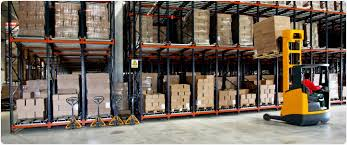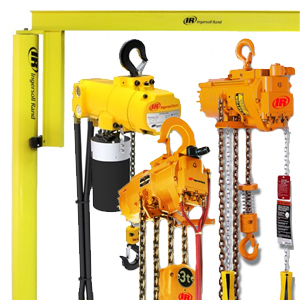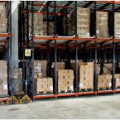
The roots of modern material handling devices are found far back in man’s evolutionary history.
Way back in primitive times it did not take long for humans to recognize that it was easier to move a heavy object if a round object could be placed underneath it like a log. The logs allowed the object to be rolled over them.
With this primitive knowledge the “Sledge” was invented which is a blending of a wedge and a sled. They cut grooves into the rollers so it needed less energy to create a turning motion. Eventually this became the axle. They learned how to use wooden pegs to secure the sledge so that when it rested on top of the roller it did not move. This eventually led to the cart.
Over time, as people became more environmentally aware and needed more durable carts and moving devices, a switch occurred from wood to metals. Throughout history there has always been a need for vertical transportation devices to move heavy loads in factories and at docks.
Early on, lifts relied on man, animal and water power developed by agricultural societies to lift heavy loads up until the Industrial revolution. In the 18th century, machine power began to be developed and applied to lift technology.
In the mid 1800’s we see the first mechanical lifts. In England they installed the first elevator driven by belts. About ten years later, in 1846, the first hydraulic industrial lift made its appearance.
It was powered by water pressure. Electric driven lifts date back to 1889. This changed industrial material handling by enabling faster movement of materials. Other powered lifting and moving devices quickly followed as the engineering of machines made swift advances.
Today, industrial facilities and manufacturing operations all utilize material handling and lifting equipment. Most of today’s lifting equipment is powered with hydraulic power used in combination with leverage.
Common Material Handling Equipment

Some lifting equipment uses electromagnetic power and others mechanical or electric power to move or lift objects.
Employing leverage reduces the amount of force required to lift very heavy objects.
Commonly used material handling equipment in today’s manufacturing and industrial applications include banding machines, forklifts, die handling , hoists, cranes, conveyor belts, lifting frames, carts, pallet jacks, skid lifts, vibratory feeders and work platforms and lifts.
How Material Handling Works Today
Nowadays, material handling and the transportation of parts is easily accomplished using a vibratory feeder or conveyor belt. Both machines can move large and small parts from one area to another. Most of the time, these machines are used within a production line so that materials move efficiently from one process to another.
Banding machinery is most often used as part of a packaging process. These machines use a variety of different materials including plastic bands, metal bands, shrink wrap, bags and vacuum bags. Not only do these machines work to package products for shipping, they are also used to hold parts and materials together on pallets for storage and transportation.
Forklifts play a crucial role in fetching and moving large objects, pallets and more within the plant and throughout the plant yards or on a dock for example. In areas that are too small to accommodate a forklift, pallet jacks or skid lifts are commonly employed to help move heavy pallets.
There is no question that businesses today need and benefit from a variety of materials handling machines. Not only do they save time, they also contribute to safer working environments, reduce physical strain and increase efficiency & productivity.
